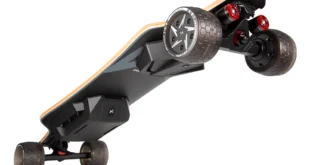Inspections of aerial networks are becoming increasingly vital in assuring the safety and effectiveness of critical infrastructures such as transmission lines, communications towers, and pipelines. Drones, helicopters, and aircraft give a unique perspective and complete picture of the infrastructure system. This article will look at why the police utilize aerial network inspections, what role they play in the inspections, and what the problems and prospects of these inspections are.
Definition of Aerial Network Inspections
What is Ariel Network Inspection
Aerial technologies like drones, helicopters, and aircraft are used in an inspection procedure called aerial network inspections to examine infrastructure systems, including electricity lines, communications towers, and pipelines.
Importance of Aerial Network Inspections
Infrastructure systems like electrical lines and pipelines must be inspected to guarantee their effectiveness and safety. Aerial network inspections offer a distinctive viewpoint and a thorough look at the complete infrastructure system. These checks are necessary to find possible issues like pipeline leaks or broken electricity lines that might cause power failures, fires, and ecological degradation.
Types of Aerial Network Inspections
Inspections of aerial networks are an important part of network maintenance and safety. The infrastructure system determines the airborne inspection employed under examination and the amount of detail required. Aerial network inspections or police drones come in various forms, the most popular of which are thermal imaging investigations, observations, and LiDAR inspections. Thermal imaging inspections employ specialized cameras to collect photographs of the thermal signature of the infrastructure system. These checks are especially beneficial for identifying heat abnormalities, identifying overheating or overloaded parts, and locating hotspots that might suggest future failures or safety issues.
Police Involvement in Aerial Network Inspecting
The Need for Police Involvement in Aerial Network Inspections
When it comes to assessing infrastructure systems like electricity lines and communication towers, the police is crucial to aerial network inspections. The presence of police officers in aerial network checks can aid in identifying and preventing criminal activities such as theft, damage, and sabotage since they are trained to recognize possible security hazards.
The Benefits of Police Involvement in Aerial Network Inspections
Police participation in aerial network inspections can assist in providing an extra layer of protection and guarantee the safety and security of the infrastructure system. Police personnel can see possible security threats and take the necessary precautions to avoid them. By doing this, accidents may be avoided, and the general public can be kept safe.
The Role of Police in Coordination and Communication
The police are essential for organizing and coordinating communications with various parties participating in the aerial net checks and recognizing potential security threats. This involves collaborating with the owners of the infrastructure systems, governmental organizations, and other police organizations.
Challenges and Future of Aerial Network Inspections
Challenges of Aerial Network Inspections
Costs associated with personnel and equipment are one of the major obstacles to aerial network assessments. Aerial inspections need specialized tools and skilled labor, both pricey. The weather can impact the examination’s effectiveness and the employees’ safety, which presents another difficulty.
Advancements in Aerial Network
Inspections Aerial network inspections are now more effective and cost-effective due to recent technological improvements. Using drones has grown in popularity for inspections that don’t need high-altitude flights and is a cost-effective alternative. Additional developments involve analyzing data gathered during inspections using machine learning and artificial intelligence techniques.
The Future of Aerial Network Inspections
With continuous technological developments and more coordination among stakeholders, the future of aircraft network inspections is bright. The deployment of aerial robots for inspections is one possible future development that might cut costs and boost efficiency. Furthermore, the advancement of new data collection and processing techniques can give more precise information on national infrastructure, resulting in better decision-making and increased safety.
Conclusion
Finally, aerial network checks have shown to be an invaluable tool for identifying possible issues and enhancing the effectiveness and security of infrastructure systems. The police presence in these inspections added extra protection and helped avoid criminal behavior such as theft or sabotage. While these inspections face constraints such as cost and weather, technological developments and cooperation between stakeholders give the intriguing potential for the future of airborne network inspections.
Are you passionate about sharing your insights and expertise? We invite you to write for us! Whether you’re a seasoned writer or just starting out. We’re looking for fresh perspectives on a variety of topics, from lifestyle and wellness to technology and travel.
 Lifeyet News Lifeyet News
Lifeyet News Lifeyet News





